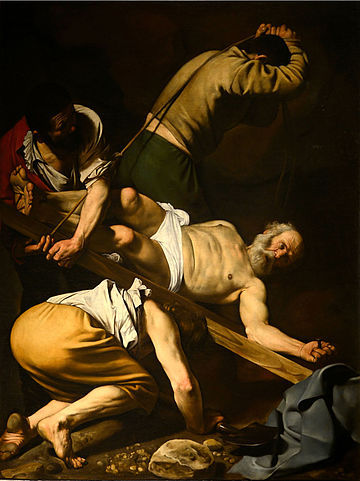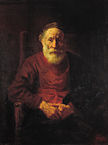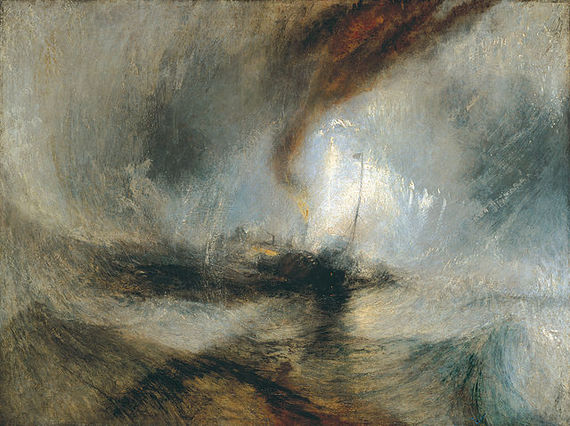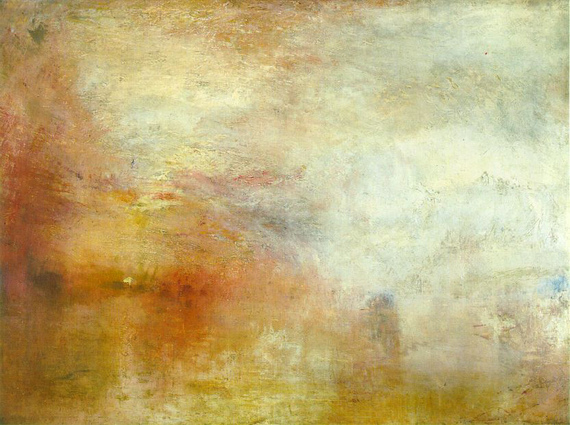The 19th French novelist George Sand once said " The artist vocation is to send light into the human heart." While that may be metaphorically true of literature and even music, it is the visual and spatial arts that utilize light itself to communicate beauty and drama to their audiences.
For example, the elements of painting - composition, color and light - have remained relatively in tact but have morphed and evolved continuously throughout their history. Subject matter has ranged from the sacred, to the natural, to the human condition and to the purely contemplative as schools of art developed from the realism of the Renaissance and beyond to the Abstract Expressionism of the 20th Century.
But it is the utilization of light that has remained central to the expressive visual arts - painting, sculpture, photography and cinematography, and architecture. It is light that offers the power of drama, of energy and atmosphere. It is a tool of effect that creates space and affects our perception of multi dimensional volume and depth. As put by Ciro Vidal Fontenelle " The perception of space is directly connected to the way light integrates with it. What we see, what we experience and how we interpret the elements is affected by how light interacts with us and the environment."
Artists have been known to go to great lengths to involve lighting as a central tenet of their work. In making the film Barry Lyndon, director Stanley Kubrick found that there was no lens available that could shoot scenes lit only by candlelight. To overcome this challenge, Kubrick had a special wide aperture lens retrofitted for this purpose. The resulting unaugmented lighting situations were the epitome of low-key natural lighting at its most extreme and enhanced the atmosphere, realism and beauty of the film immeasurably..
In reflecting upon his field, Le Corbusier famously said "...architecture is the masterly, correct and magnificent play of volumes brought together in light. " Indeed, light illuminates perception and the layered process of creating great art has continually utilized its electromagnetic radiation as a powerful affectation and, more recently, as a immersive, non visceral subject in and of itself.
THE PAINTERS
Caravaggio and Rembrandt - Drama and Theatre
To begin a discussion around these two painters, it is important to define chiaroscuro and place it in the context of the work of these two great artists. Chiaroscuro ( Italian; " light-dark") refers to the use of contrasting light to create an illusion of volume and dramatic effect. In painting, it is a representation of clear contrasts where subject matter is depicted with high-keyed whites against very low-keyed darks.
The use of chiaroscuro technique, while introduced by Leonardo and other Renaissance painters in the 15th Century, was prominently manifested in the work of Caravaggio in the years surrounding 1600. Caravaggio (1571-1610) was an Italian painter best known for his penetrating studies of the human condition, in both religious and secular contexts, depicted dramatically through the
use of contrasting light to create the illusion of a spotlight being turned on his subjects affecting the whole composition. At times, in fact, one can see examples where the emphasis on light and shadow were more important than the scene itself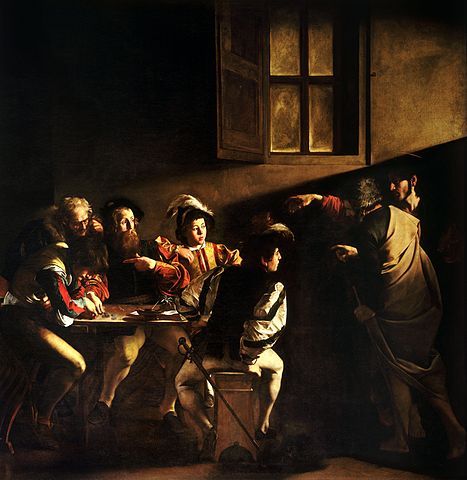
The Calling of St Matthew was completed by Caravaggio for the church of San Luigi del Francesi in Rome in 1600, where it remains today. It recalls the biblical moment when Matthew the tax collector is singled out by Jesus to repent and follow him into a life of sanctity and devotion. Compositionally, the painting juxtaposes two geometric patterns - the horizontal rectangle of the tax collectors on the left and the vertical figure of Jesus on the right - connected and integrated by the beckoning arm and hand of Christ.
The lighting is dramatic, with the subjects draped in shadow with spotlights engulfing the protagonists and infusing the picture with dramatic intent. The central symbolic lighting is the beam on light of unknown origin (presumably from heaven) shining on Matthew and his brethren to shed enlightenment and divine mercy upon them.
The Crucifixion of St Peter (1601) depicts the martyrdom of the first Bishop of Rome, when he is crucified upside down by Nero. The picture is grim. The dark background and contrasting light serves to highlight the figures in various states of pain and remorse - the three Romans whose faces are hidden in shame from the viewer and Peter, the old man who is suffering pain in fear of death. The dramatic lighting illustrates that the death of Peter was not a heroic one - it is one of horror and humiliation.
Rembrandt van Rijn (1606-1669) is generally considered one of the greatest painters in European art and the most important in Dutch history. He was prolific but, significantly, his work lies in strong contrast to the European Baroque movement pioneered by Caravaggio 30 years before.
While diverging form Caravaggio and others, Rembrandt also used lighting ,and in particular chiaroscuro, to add a profound sense of drama to his major works - both those in observation and invention and the multitude of self- portraiture he produced throughout his career.
The Night Watch (1642) is arguably Rembrandt's most famous painting and, along with it's size ( 12 ft by 14 ft) and revolutionary feeling of motion and impending action, it is known for its strong use of chiaroscuro in presenting the subjects and their symbolic importance.
The painting depicts the mobilization of a Dutch militia, at war against the Spaniards, led by Captain Frans Banning Cocq and Lieutenant Willem van Ruytenburch. Through the dramatic use of lighting, the viewers eye is led to the two leaders (symbolizing the sectarian unity of the Dutch Catholic and Dutch Protestant churches) and to the young girl angled behind them. The figures stand in stark contrast to the rest of the militia who are bathed in shadow but exhibit an excitement and loyalty as they prepare to enter a nationalistic war. The painting and its effective lighting constitute a theatrical departure from the ritualistic group portraits that were popular during this period.
In contrast to the heroic nature of The Night Watch, Rembrandt often softened the edges of his lighting effects to achieve an air of calmness and simplicity around his subjects. A good example of this can be seen with An Old Man in Red (1652). As the light softly bathes from the subject's right, the viewer sees a man who exemplifies the positive aspects of age and experience. The man sits in confident, spiritual calm as the light emphasizes the painter's brush strokes and use of color designed to highlight hands that although gnarled, are now at rest and the dignified, beatific face of a man who sits in representation of the nobility of the human condition.
Turner - Energy and Repose
J.M.W. Turner (1775-1851) was the 19th century's greatest landscape painter. His work included many representations of Nature, in particular the sea, and his painting often times depicted the 19th century Romantic notion of the "sublime" - or the symbol of the insignificance of Man as he relates to Nature. Significantly, his work consistently centered around the motif of brilliantly modulated light emanating from the sun and moon, particularly over water. As Katherine Stephen describes "It is this rendering of light and other atmospheric effects such as fog and mist - Turner's "exalting experiences of light and color," as described by art writer Graham Reynolds - that ultimately wows the viewer more than the sound and fury of many of his most dramatic subjects".
To me, the key to Turner is the evolution of his work as he progressed through his life and seemingly removed the superfluous dynamic from it, focusing on those parts most pure and that stand alone. As he aged, Turner's work and presumably his worldview turned inexorably to the elemental forces depicted by light and color. The paintings conceived and executed during the later stages of his life show a radical departure from the artistic modality of the early 19th century and foreshadowed the emergence of Impressionism 30 or so years hence.
Consider Snow Storm - Steamboat off a Harbour's Mouth (1842)
The inherent violence of the sea and the force of the storm are shown by the emphatic brush stokes and use of contrasting light. Here Turner is less concerned about the specific - he has moved to a more abstract and elemental view of the physical power of Nature. The ship is in serious jeopardy but the vision is of the energy of the storm.
Late in life Turner's vision had turned to an almost purely abstract view and explored not a specific subject but, rather, a study of light itself in Sun Setting Over a Lake (1840).
The depiction of light is all that matters here - physical objects are rendered unrecognizable and superfluous - but the sublime beauty of the scene is captured in a blending of color and brushwork skilled beyond measure.
Edward Hopper - Atmosphere
Edward Hopper (1882-1967) was a prominent and famous American realist painter and printmaker. His work has been prominently displayed and reproduced for many decades as his gifts for draftsmanship and teasing narratives have been enjoyed and studied by many. Hopper made strong use of light and shadow in constructing his narratives and emphasizing the inherent architecture in the construction of a scene.
By way of example, let us look at what is arguably Hopper's most famous painting -Nighthawks (1942).
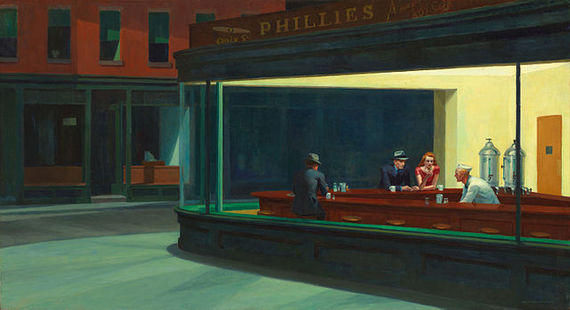
In this painting Hopper depicts an ordinary scene at an all night diner in his home neighborhood of Greenwich Village, New York City. The protagonists are quietly eating and sipping coffee as the diner worker cleans up under the counter. The chiaroscuro technique emphasizes the well lit diner but it also acts to draw the viewer to the geometry of the painting - the dramatic diagonals and verticals that frame the composition.
When viewing this painting, I reflect on the subjects, and I wonder what the narrative and interactions must be like inside that diner late at night. I look at the gleaming coffee urns and the cherry countertop. I wonder particularly about the man with his back to the viewer - is he a sinister character or just someone enjoying a late night cup of coffee? But the juxtaposition of the bright lights of the diner vis a vis the shadowy streets of the neighborhood remind me that these people are isolated at this moment within a city of great energy and dynamism. John Updike once observed that "Hopper is always on the verge of telling a story". And in Nighthawks that is certainly the case- and it is the dramatic use of light and shadow that give the viewer an entry into the narrative and offer a set of questions about the alienation and loneliness that continues to pervade our society.
THE SCULPTOR OF LIGHT
James Turrell - In and of Itself
The art of James Turrell (1943 - ) is unlike any other. A pioneer in the light and space movement of the 21st century, Turrell creates contemplative and experiential spaces where light is no longer a tool to create an effect or enhance the composition of a presentation, but rather light is itself the subject of the piece.
The character of the works are difficult to describe in words - large installations of geometric boundaries that are made illusionary by the use of light to create new spaces and new consciousness. Turrell, in his peaceful and challenging light chambers, conjures and makes real something that is not there. This is art that must be experienced to be fully realized - one must invest time and effort to see its secrets revealed. The notable art critic Robert Hughes wrote "...one is confronted - perhaps more vividly than any current painting - with the reflection of one's own mind creating its illusions and orientations, and this becomes the subject of the work. The art, it transpires, is not in front of your eyes. It is behind them."
In 2013, the Guggenheim Museum in New York presented a collection of Turrell's work. http://www.guggenheim.org/new-york/exhibitions/past/exhibit/4819, featuring a new installation, Aten Reign (2013) that filled the museum's rotunda space with a spectrum of changing artificial and natural light. See the website above for a description by the show's curators and comments from the artist himself.
Turrell's magnum opus, however, is Roden Crater - an elaborate series of celestial observation tunnels and chambers built into an extinct volcanic crater outside Flagstaff, Arizona. Turrell has been constructing this massive installation since 1979 and it is, apparently, near completion in preparation for public viewing. A project of this size and magnitude serves, among other things, to remind us of the meaninglessness of time when building something that is designed to last for centuries. It is the epitome of an artist's life work.
Light, at its most elemental, informs the work of James Turrell and serves as a guidepost, a means and an end to answer art's most fundamental questions and narratives.

